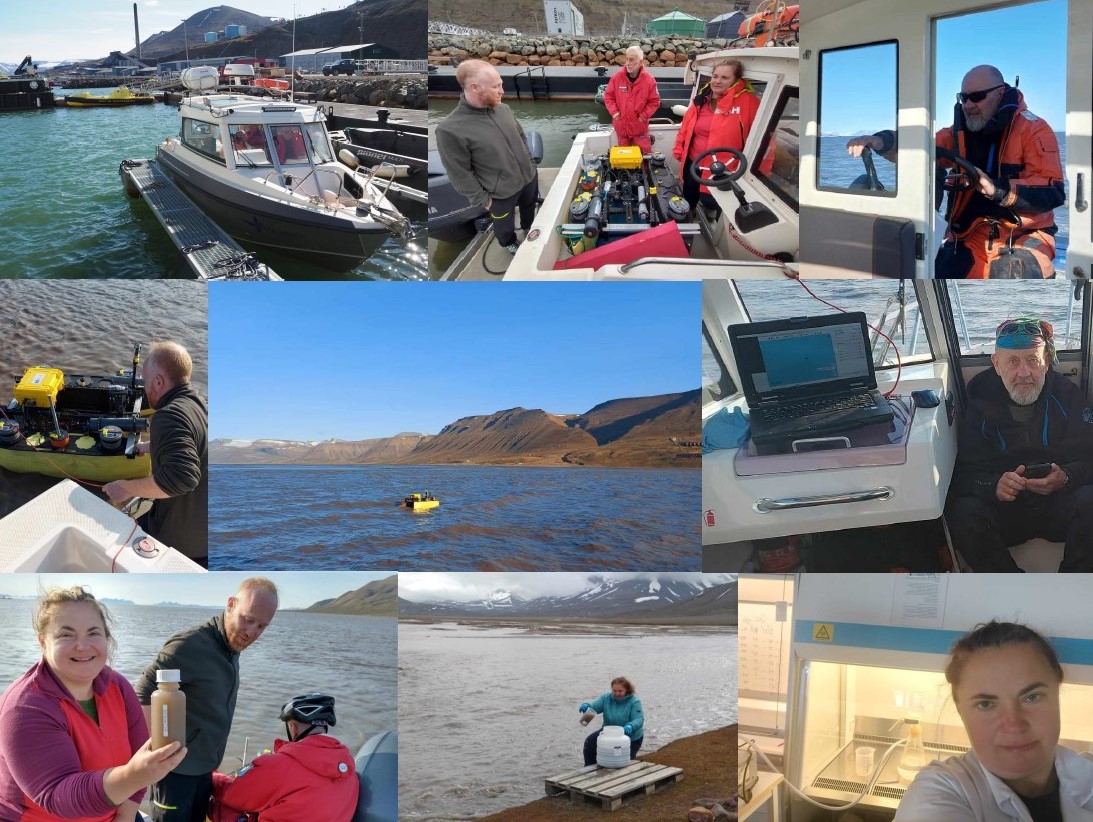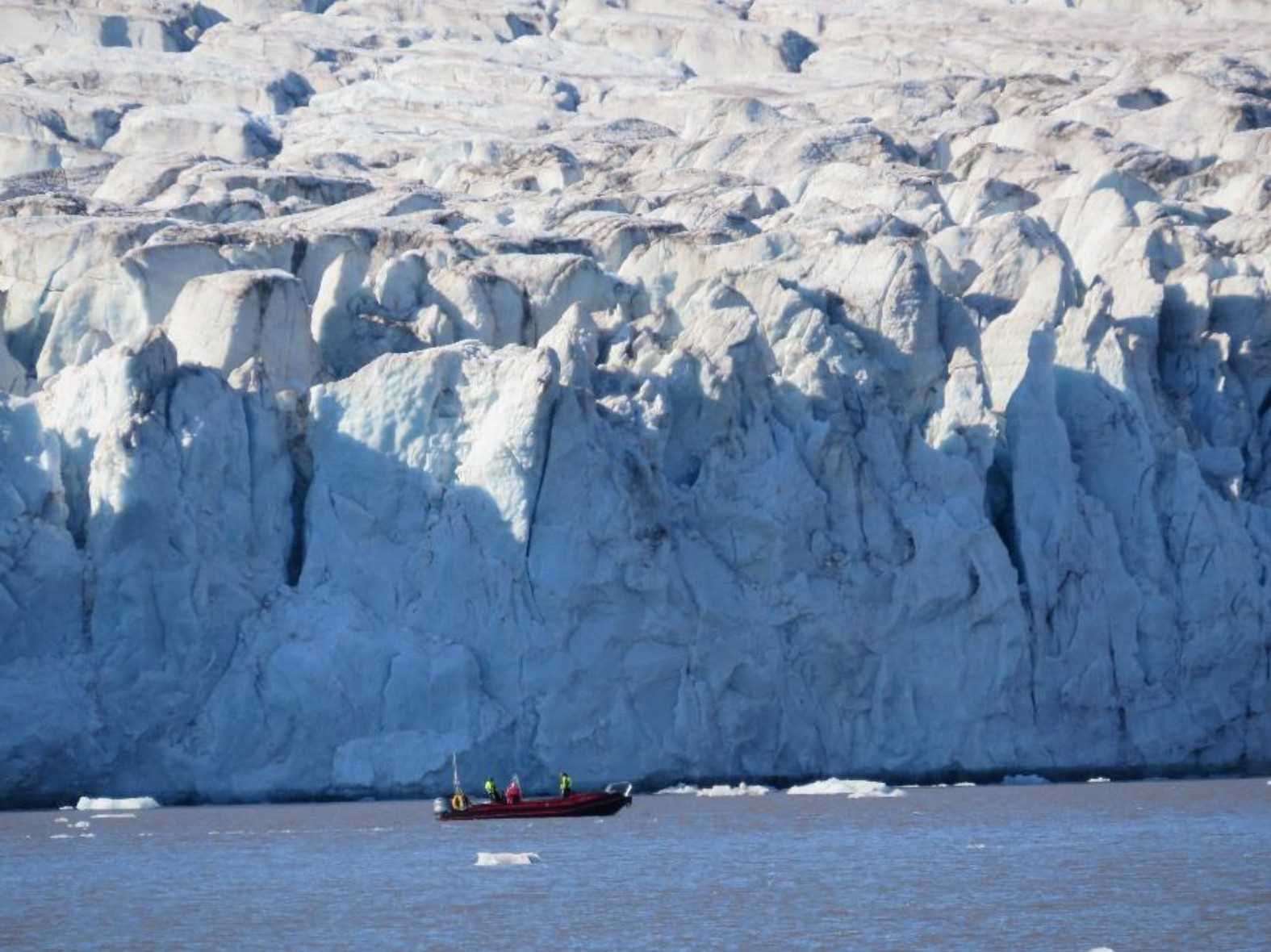The five SIOS access projects completed in 2023 showcase the diversity of Earth System Science research in Svalbard. These projects covered fields such as glaciology, oceanography, atmospheric chemistry, hydrology and environmental chemistry. The project leaders came from institutions in five different countries: Poland, Italy, U.K., Germany and Norway.
Agata Zaborska from the Institute of Oceanology of the Polish Academy of Sciences worked in the vicinity of Longyearbyen to assess inorganic pollutants discharged by Adventelva (Figure 1). Agata and her team persevered to overcome delays caused by the pandemic and the SAS strikes, successfully sampling in Adventfjorden in 2023, with support from a boat from IG-PAS and laboratory access at UNIS. They used bicycles to pedal between the town and the harbour, which was no mean feat with sampling equipment and water samples in tow! Meanwhile, Frank Nilsen from the University Centre in Svalbard led the first ever SIOS access project to deploy ocean gliders, with staunch support from the team at The Norwegian National Facility for Ocean Gliders (based at the University of Bergen). While this project encountered difficulties due to leaks in the gliders, the project team remains undeterred, with phase 2 of the project planned for later this year.

Just across from Longyearbyen, William Harcourt (from the University of Aberdeen) and his team were supported by the Norwegian Polar Institute to bring fresh insights into the surge of Borebreen. They mapped the ice front of Borebreen by floating in a small boat as the surging glacier advanced towards them (Figure 2).
Two SIOS access projects were based in Ny-Ålesund in 2023. Stefania Gilardoni, from the Institute of Polar Sciences at the National Research Council of Italy, worked at the Norwegian Polar Institute's Zeppelin Observatory in Ny-Ålesund to investigate the chemical composition of submicron cloud residual particles. Lasse Hertle, from the Helmholtz-Centre for Environmental Research, visited the French-German AWIPEV Research Base to install a cosmic-ray neutron sensor to measure soil moisture at the Bayevla site. The group will continue their novel work in Ny-Ålesund this year with a second SIOS access project.
One of the highlights of the 2024 Polar Night Week in Longyearbyen in January was that many of the project leaders presented their access projects in the Polar Night Seminar. It truly was a delight to hear such excellent presentations about a diverse range of scientific research in Svalbard. We are grateful to the members of the SIOS consortium who provide access to their research infrastructure in the SIOS Access Programme, and look forward to a continued collaboration!




























